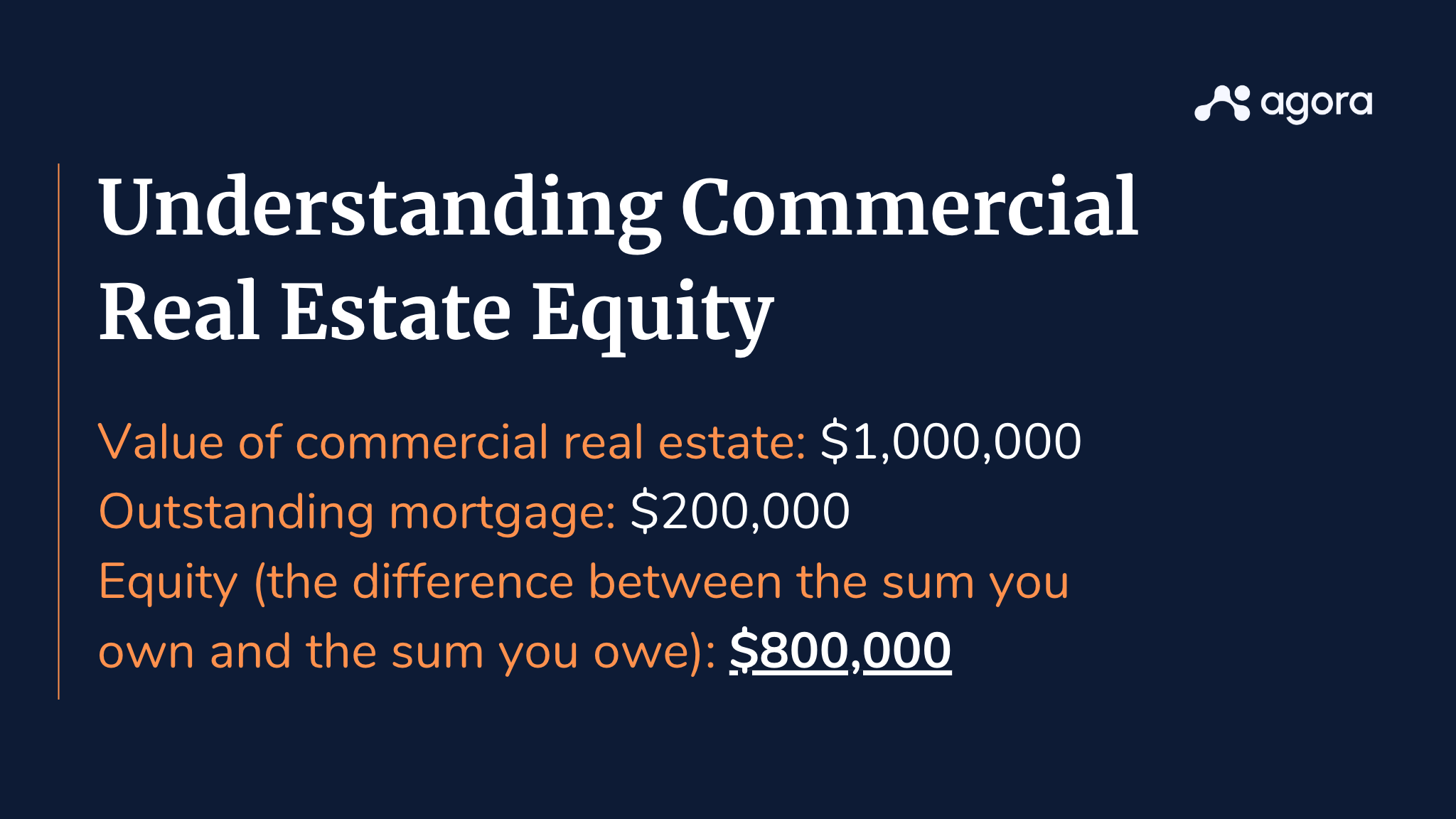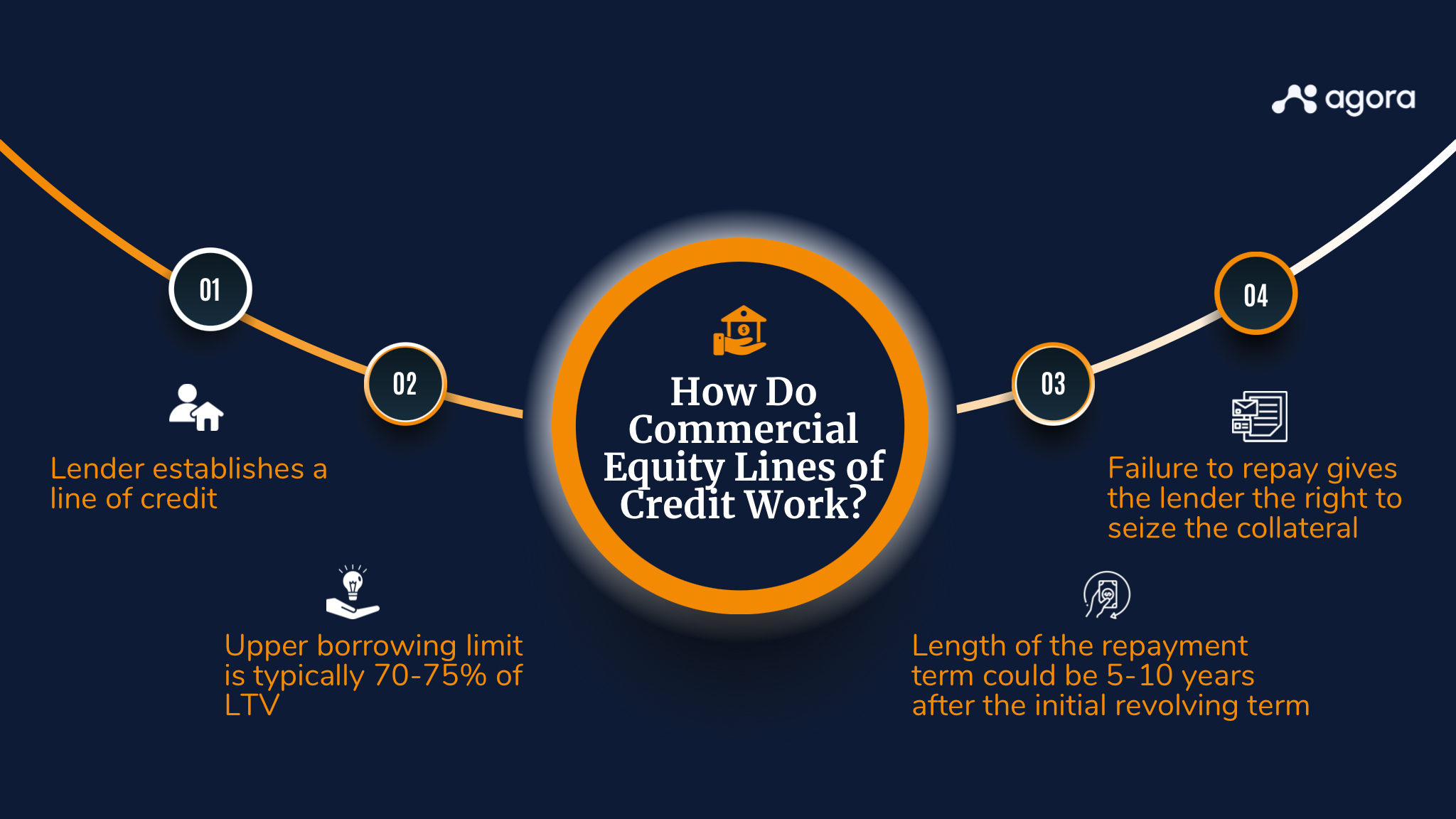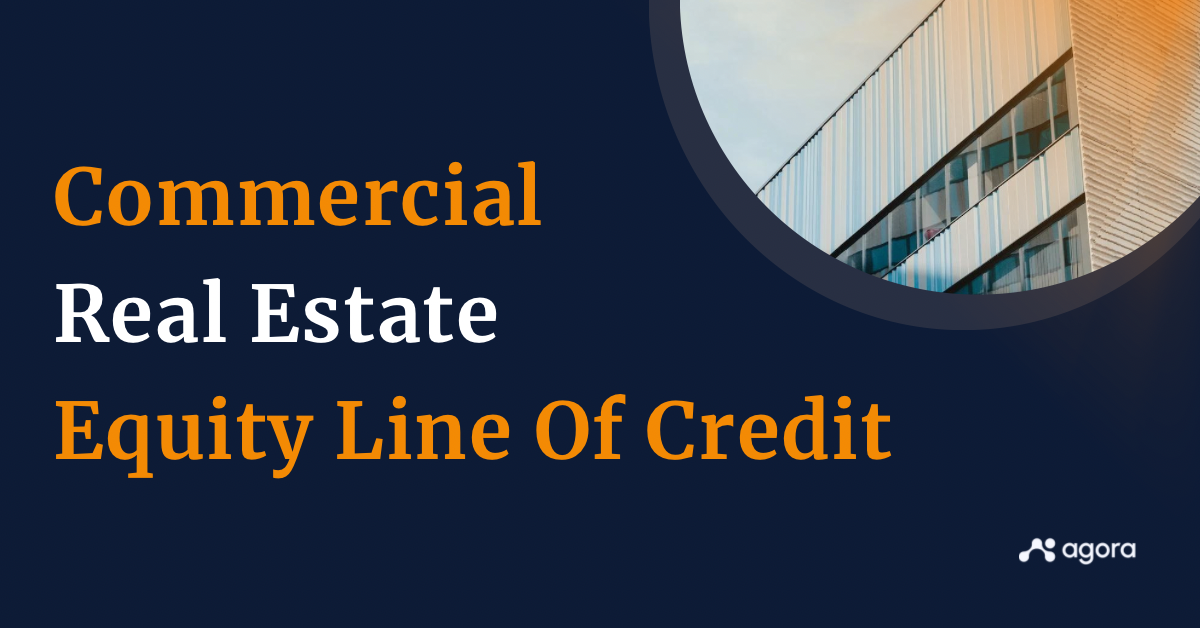In real estate parlance, equity refers to how much your property is worth and how much you owe on it. The higher your equity in a property, the more collateral you can offer and the greater the sum you can borrow against it. You can use this equity to borrow funds from a bank or a private lender. Your equity in the property is collateral for the lender who is advancing funds.
Understanding commercial real estate equity
We have already pointed out that when talking about commercial real estate equity, we’re referring to the equity you’ve built in the property. The remaining part of the property’s value is the sum owed on the mortgage.
Let’s understand this concept taking a commercial equity loan as an example. Let’s say, a commercial property is valued at $1 million, and the outstanding mortgage is $200,000. In this case then your equity in this property is $800,000.

The equity you have in a property could allow you to raise a loan, or it could enable you to set up a commercial real estate equity line of credit.
Types of commercial equity lines of credit
A commercial real estate equity line of credit, or a CELOC as it’s known, provides a commercial real estate owner with a loan against the equity held in a property. The unique feature of a commercial real estate line of credit is that it offers borrowers a high degree of flexibility. You can borrow as much or as little as you want.
For example, if you set up an asset based real estate equity line of credit for $800,000, but your immediate requirement for funds is only $500,000 – you can draw on the CELOC for only $500,000 and pay interest on this sum. The remaining $300,000 could be drawn later when you need it.
Another option similar to a homeowner’s HELOC, but for commercial use, is the commercial HELOC, which offers flexibility and access to funds based on the property’s equity.
There are several types of CELOCs that one can choose from, based on two key requirements:
- Credit rates: Your choice could be based on the commercial real estate line of credit rates. As a general rule, a commercial real estate private equity line of credit is more expensive than one offered by a bank. However, this is not an ironclad rule, and you could get better rates from either type of lender based on your negotiating skills.
- Loan term: You could also choose a commercial real estate equity line of credit based on the loan term. Shorter loan terms mean larger monthly installments. So, if you opt for a five-year loan, your repayment installment would be higher than if you had chosen a CELOC with a longer repayment period of ten years.
Although a CELOC is a revolving line of credit, it can be converted into a 5 or 10-year amortized loan after an initial term of a specific number of years.
How do commercial equity lines of credit work?
A commercial equity line of credit works by setting up a preset borrowing limit, offering the same flexibility and security as a CELOC.
The principle on which a commercial equity line of credit works is straightforward. A lender sets up a preset borrowing limit for the commercial real estate owner. The equity in the property acts as collateral.
How much can a property owner expect to borrow? The credit limit LTV (loan-to-value or the lending limit of the line of credit divided by the equity held in the property) is usually in the range of 70-75%.
Repayments are usually made over 5-10 years after the initial revolving term is over. Of course, if you fail to pay at any stage, the lender has the right to seize the collateral to recover its losses.

Loans vs. Lines of credit
There’s a fundamental difference between a commercial real estate loan and a commercial real estate equity line of credit. The former involves a loan disbursal in one lump sum, while the latter provides the borrower with funds as and when needed.
However, that’s not the only difference between a loan and a line of credit. Here are several other ways in which the two are different.
| Commercial real estate loan | Commercial real estate equity line of credit |
| Funds are disbursed once. | Borrow up to a specific limit, repay the money, and then borrow again. |
| Interest is payable on the entire loan amount from the day funds are disbursed. | Pay interest only on the funds that you draw. |
| Fixed repayments based on the rate of interest and the term of the loan. | Repayments are flexible for the revolving term. After that, the facility could be converted into a loan. |
| Typically used for buying equipment or other large-value purchases, although there is usually flexibility in the use of funds. | Funds can be used for most business purposes. Often serves as a business line of credit for real estate investors. |
Purpose and benefits of CELOC
The primary benefit of a CELOC is that it provides access to cash at short notice. Additionally, you can draw funds when needed and repay as soon as you have any extra liquidity. Lastly, CELOC funds can be particularly useful for property improvements, allowing for renovations that can increase the property’s value and operational efficiency.
- You can capitalize on new investment opportunities: Using equity line of credit (CELOC) to buy commercial real estate is a good option if you need funds quickly.
- Helps meet your working capital needs: If liquidity is tight, funds from a commercial real estate equity line of credit can help you meet your short-term needs.
- Funds can be used for a wide range of purposes: You can use CELOC funds for capital purchases, renovations, hiring employees, or even a new marketing campaign.
- Tax benefits of CELOC: Property owners can deduct the interest they pay on the line of credit when computing their taxes.
How to obtain a commercial real estate equity line of credit
Commercial equity line of credit (CELOC) requirements revolve around one essential condition – how much equity can you offer as collateral in your business property? If you fail to repay the borrowed funds, the lender can fall back on this collateral to recover its dues.
At this stage, it’s also essential to consider the types of real estate that can be offered as collateral when applying for a CELOC. Requirements vary by lender, but typically, commercial properties like the following categories are eligible:
- Multi-family apartments
- Office buildings
- Warehouses
- Retail properties
- Mixed-use properties
- Self-storage properties
Steps involved in the application process
The commercial equity line of credit application process can involve several steps:
- Make a list of banks and other lenders who offer lines of credit against commercial properties.
- Study the terms and conditions each lender offers. Pay close attention to the eligibility criteria of each lender. You don’t want to waste time applying to a bank that wouldn’t approve your application.
- Shortlist the lenders that you would like to apply to.
- Collect the documents that you would need to submit. Each lender’s documentation list is different, but you will be expected to provide most of these:
- Tax returns for the last 3 years
- Financial statements, including those for the latest quarter
- Personal tax returns for guarantor(s)
- Property documents and proof of ownership
- Insurance details
- Submit the required documents and the completed application form, and be prepared to reply to any questions the lender may raise.
Factors considered by lenders
When deciding on your application, the lender will consider these factors:
- The value of your property and the equity you hold in it
- Business and personal credit scores
- The level of your income
- How long you have been in business
- Your other business debts
Pros and cons of a commercial equity line of credit
Commercial equity line of credit (CELOC) has both its pros and cons, and it’s important to consider them before making a decision.
| Pros | Cons |
| A high degree of flexibility. Borrow as little or as much as you want (subject to the limit of the line of credit). | The flexibility could come at a cost. You may have to pay several types of fees (appraisal fees, late payment fees) that could add to the cost of the loan. |
| It’s an excellent way to meet temporary working capital needs. | Instead of repaying the line of credit, you could be tempted to keep the cash handy, leading to greater interest costs. |
| Funds are available to capitalize on new business opportunities. | Easy access to money may lead to hasty (and unprofitable) business decisions. |
| Interest rates are lower than those available for unsecured loans. | Failure to repay could affect your credit score. |
When to choose CELOC?
Commercial equity line of credit can be a good choice in the following scenarios:
- For businesses that require flexible financing to manage cash flow, fund expansions, or cover unexpected expenses
- For companies with significant equity in their commercial properties, as it allows them to borrow against this value at competitive interest rates
- For businesses that prefer a revolving credit facility they can draw on and repay as needed, rather than a fixed-term loan
- For organizations looking to capitalize on investment opportunities quickly, finance renovations, or ensure they have access to funds for operational needs without having to apply for new loans repeatedly
The bottom line
CELOCs provide commercial property owners with an excellent way to raise cash. The most significant advantage of this form of borrowing is its flexibility. It permits you to draw funds only when needed and repay when you have extra liquidity. This helps keep interest costs low as you pay interest only for the period you have utilized the funds. Additionally, you have the advantage of having access to capital when you need it most-say, for meeting a working capital shortfall or capitalizing on a promising investment opportunity.










